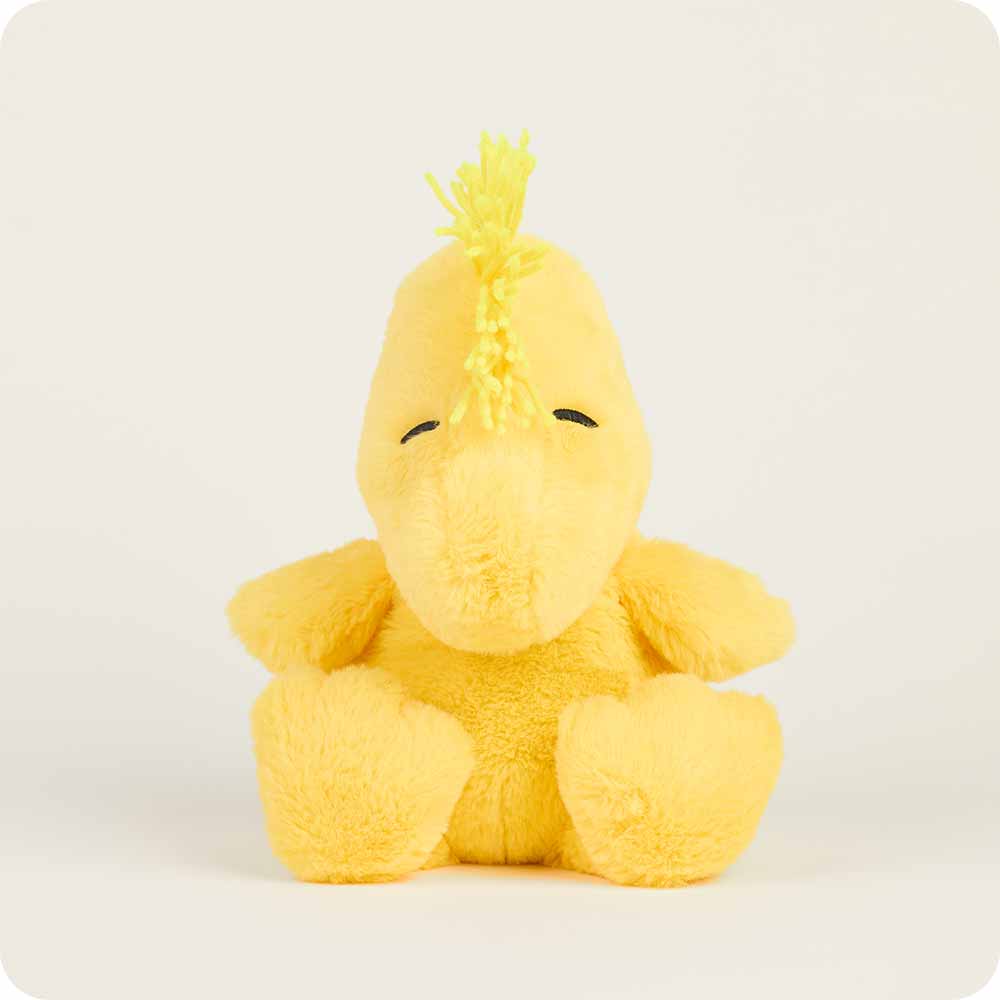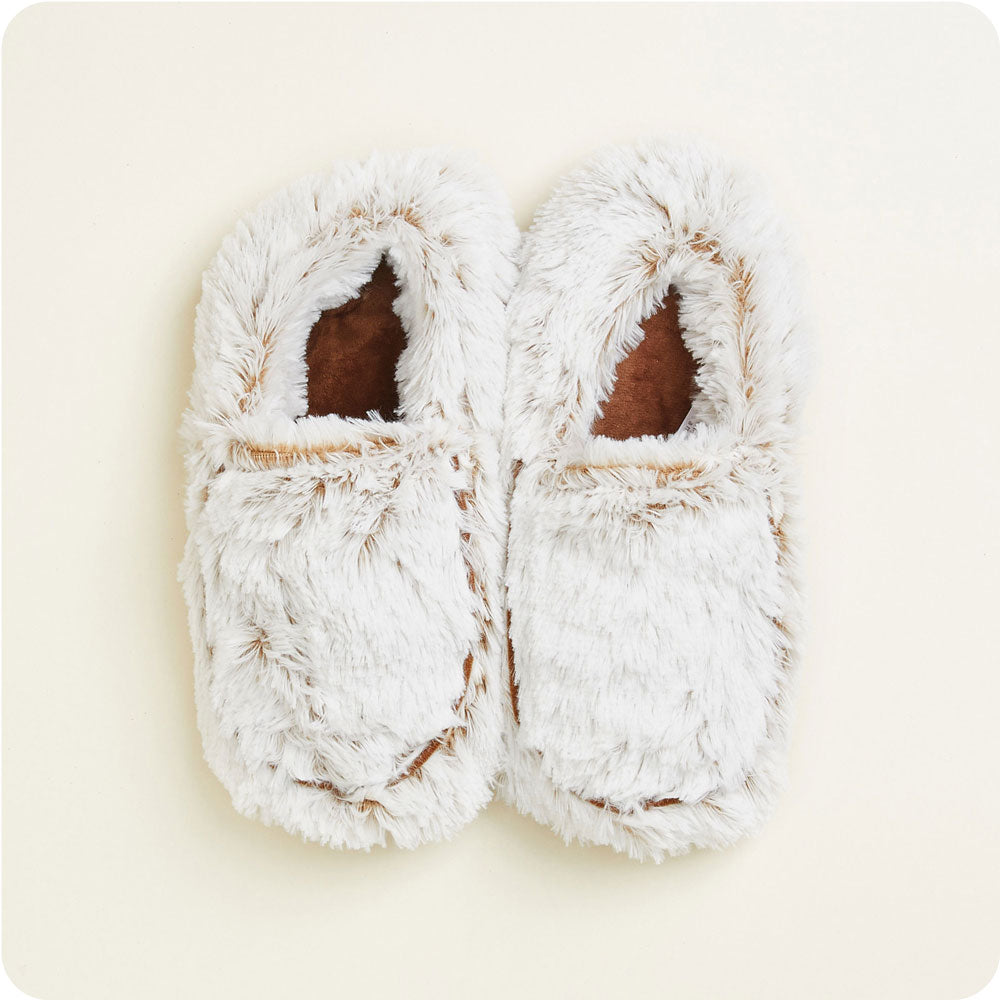How to Safely Use Microwavable Heating Pads
The Ultimate Guide to Safely Using a Microwavable Heating Pad
Microwavable heating pads offer on-demand comfort and pain relief for all who need it. For example, heating pads for upper and lower back pain allow your muscles to relax and feel better by dilating blood vessels and giving those muscles better blood flow. There are tons of microwavable heating pads out there, but what are the safety considerations when using one? Well, this article is going to explore all of the safety considerations that you need to factor into your decision-making process when choosing the perfect microwavable heating pad for your needs. These considerations are all about preventing burns, irritation, medical emergencies, and even property damage. You're going to learn all about how these pads work and what you need to do to ensure you are safe 100% of the time while using one, so let's get into it.
How Do Microwavable Heating Pads Work?
Microwavable heating pads work thanks to the type of filling that they have. This filling, whether plastic or natural, is designed to be heated up and retain that heat. Different types of filling, as well as the overall strength of your microwave, will affect how long your pad remains warm.
Microwavable heating pads that use plastic polyfill are a very popular pad out there on the market. Plastic is cheap to make and cost-effective for manufacturers and consumers alike. The only real consideration to factor in is the possibility of toxins being released when heated up in the microwave. Plastic releases all kinds of toxins and poison when heated up. While it may be negligible for most consumers, this may be something that raises red flags for others.
Other types of microwavable heating pad use natural filling. For example, Warmies uses natural flaxseed. Flax retains heat at higher rates than cotton and other natural fibers. There's also little to no worry about this type of pad releasing any type of toxin or poison when heated up which is why it's the best heating pad.
While microwavable heating pads are growing in popularity, there are other types on the market that are just as effective:
- Battery-operated
- Electronic/plug-in
- Adhesive
- Disposable
- Water-based
When considering which type to choose, consider the following factors:
- Size, shape, and color
- Portability
- Quality of construction
- Flexibility
- Heating method and features (i.e. auto turn-off)
- Safety features
- Manufacturer instructions
Preparing the Microwavable Heating Pad
Before you use any heating pad, especially a microwavable one, be sure to read the entire instructions and recommendations offered by the manufacturer. These will outline how you use the product, how to care for it, and what to avoid when using it. In order to better assist you, here are some of the general instructions that care practices that you may encounter:
Heating Practices - Be sure to remove any tags and make sure that the product is clean and dry. Before placing it in the microwave, ensure that the inside of the microwave is clean and the turntable is unobstructed. You can place a clean paper towel underneath the pad if you want to ensure the pad remains clean and dry during the heating process.
Heating Time - 90 seconds for 600w to 800w microwaves; 60 seconds for 850w to 1000w microwaves.
Cleaning Practices - If ever unclean, do not submerge the pad in water and avoid the washing machine. Water will destroy the capabilities of the filling inside. Instead, use a clean, damp towel and spot-clean the product.
Health Considerations - Consult with a medical professional before using the heating pad if you suffer from diabetes or other ailments that may be adversely affected by heat.
Storage - Keep your pad clean and safe by storing it in a cool, dry place when not in use.
Inspection - Check for any leaks or tears in the heating pad's cover. Contact your pad's manufacturer if your pad does arrive damaged or defective.
Testing the Heating Pad before use
Once you've inspected your heating pad and have gotten it heated up, it's time to use it. But before you stick it on your body, there are some additional heating pad safety precautions to check off the list.
First and foremost is allowing the entire pad a brief few moments to cool down enough to where it won't feel like it's burning your skin. Some manufacturers may include this in their safety briefing, others won't. Typically, you'll want to let your pad cool down for at least a full minute.
Next, once the pad is removed and you can handle it with your hands, make sure the heat is evenly distributed throughout the pad. If there are patches of cold, you're going to need to reheat the pad. Let the entire pad cool down before reheating, as to prevent damage to the product from overheating. When ready to reheat, make sure your microwave turntable is able to move and that the pad is evenly placed. Make sure that pad is flat and the filling is evenly patted down. Taking these steps will help your heating pad be evenly warm throughout.
As mentioned above, overheating can damage your pad. Especially when it comes to Warmies products, the filling can be damaged if overheated. When this happens, the product becomes unusable and should be discarded once it cools down. In order to avoid overheating, allow the product to cool completely and only ever heat it up when the product itself is at room temperature. This will help prevent the product from getting burned and help your skin from getting burned as well.
Finally, when applying the product to the affected area, never place it on bare skin. Always use some kind of barrier between the product and your skin. The barrier can be something like a towel, a piece of clothing, or a blanket. This will keep sensitive skin safe and prevent burns, however mild. Using heating pads properly will help you stay safe and aid in your pain relief journey.
Precautions and Safety Tips
Safe application of heat pads will help you feel more comfortable, so here are some additional tips when using a microwavable heating pad:
- Monitor the heating pad during use - Every now and then, inspect the pad for any kinds of tears or rips. Are some areas getting worn down more than other areas? Does the pad feel too hot even after a short cooling period before use? Adjust your heat up practices.
- Keep a safe distance from the microwave while heating - Microwaves emit small amounts of radiation during use. It is advised that people stand a few feet away from the microwave during use, so don't stick your head close to the appliance when waiting for your pad to heat up. The beep at the end will tell you when it's ready for you. Just be sure to stick around close enough to make sure your pad doesn't catch fire or anything extreme like that.
- Proper storage and maintenance of the heating pad - Making sure that your pad is stored properly will help in the pad's longevity and function. Storing it in a dry and cool place will prevent it from degrading and experiencing issues during the heating process. Make sure that the pad stays clean by spot cleaning it with a clean, damp towel. Do not submerge the product in water, as this will destroy the filling and render the product unusable.
Safety Considerations for Specific Users
You may also wonder if there are any risks associated with using a microwavable heating pad, and we've got you covered. Read below for some more important risks and safety considerations regarding heating pads and your health and safety:
- Age - All Warmies products are safe for all ages. While some products are geared towards younger or older individuals, use your discretion and don't leave young children or babies alone with certain products.
- Health Issues - Certain health issues may benefit from the use of heating pads and other related Warmies products. However, there are other health issues, such as diabetes, that may be exacerbated by using heating products like microwavable heating pads. These products should not be used in replacement of medication and other medical intervention. Consult your doctor if you have certain medical concerns.
- Heating in other appliances - These Warmies products should only be used in the microwave (or freezer, for cooling effects). Using them in the dryer can destroy the product altogether with the high temperatures.
Conclusion
So now you know all about the importance of safe application of heat pads and how to go about choosing a safe heating pad for your needs. Our heating pads are helpful in relieving all kinds of pain and discomfort, so long as you follow the manufacturer's recommendations and instructions. While you can use them in conjunction with other medical and natural remedies, you definitely need to consult a medical professional if you have serious conditions that need attending to. You can explore all of the great options Warmies has to offer and the best-selling pads that our customers love. Be sure to connect with our team and explore the Warmies FAQ page to understand how to properly care for your microwavable heating pad.























